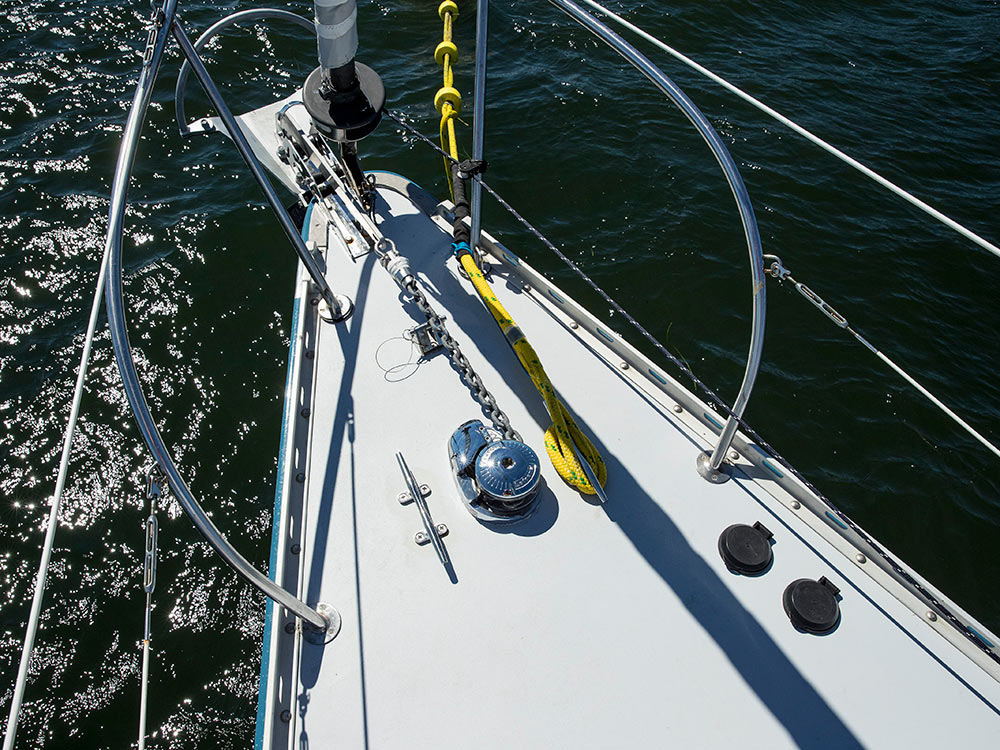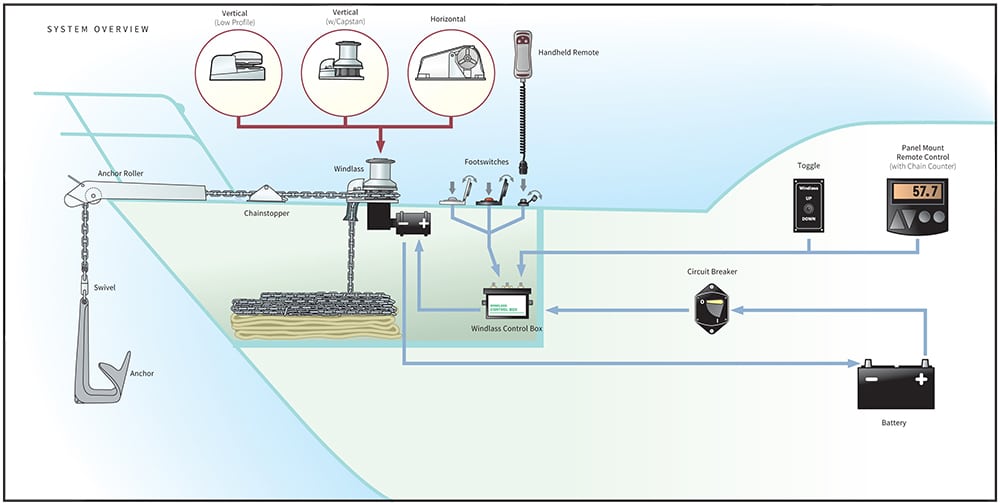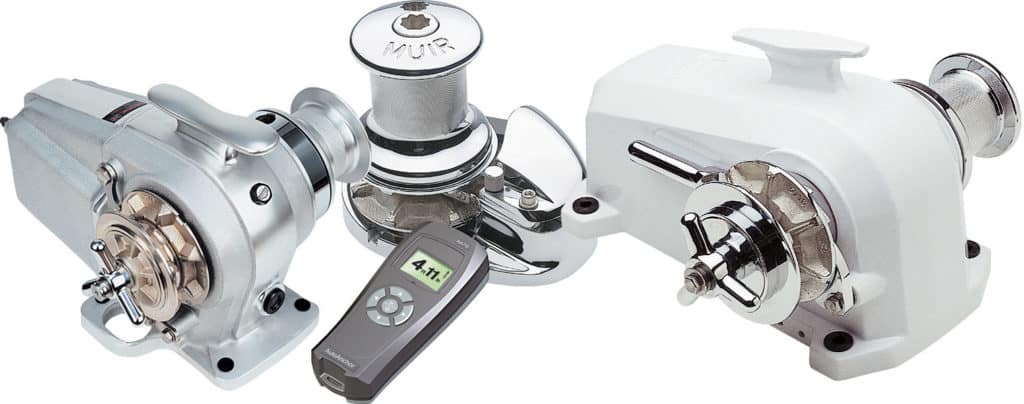

One expert says that finding the right answers before the installation is critical to its success.
Removing and replacing an old windlass is one of the most satisfying DIY projects a boater can undertake, but one expert says that the devil is in the details on any new installation. “It may not be rocket science,” says Jim Thomas, windlass specialist at Imtra, which distributes both the Muir and Lofrans brands. “But there are questions that need to be answered even before a do-it-yourselfer starts cutting holes or removing the old windlass.”
Thomas says that boaters need to pay attention not only to whether the windlass is vertical or horizontal, but also the physical size of the new windlass, its power draw, the depth of the anchor locker, and what rode materials will be used in the new system. Thomas has been answering questions about windlass installations for more than two decades and invites anyone interested in a refit to contact him for advice before getting started. “Many of our windlass sales go to boatyards for installation, but some boat owners will tackle the project themselves.”

Thomas mentioned that even though Imtra sells windlasses primarily through trade channels, the company will offer boat owners “the best advice it can” to make the installation go as smoothly as possible. Thomas even provides paper templates to owners at boat shows allowing them to compare the potential new windlass to the existing footprint of the original. This provides a clear perspective on the challenges of using existing deck cutouts. Knowing what will need to be filled, cut or modified takes the mystery out of the upgrade.
Thomas mentioned that even though Imtra sells windlasses primarily through trade channels, the company will offer boat owners “the best advice it can” to make the installation go as smoothly as possible.
Thomas even provides paper templates to owners at boat shows allowing them to compare the potential new windlass to the existing footprint of the original. This provides a clear perspective on the challenges of using existing deck cutouts. Knowing what will need to be filled, cut or modified takes the mystery out of the upgrade.
He sometimes asks boat owners for photos of the foredeck and anchor locker. “We do each project one windlass at a time,” Thomas says. “It’s important for owners to understand the different factors that make for a successful installation,” he says.
The different factors include vessel length and displacement, weight of the anchor, weight and length of the chain, plus the anchoring environment. Windlass types include horizontal, vertical, manual, electric or hydraulic. Some manage an all chain rode, others select a combination rope/chain rode. Where a combination rope/chain rode provides less total weight in the bow, it requires a scope of 7:1 when deploying the anchor. An all chain rode will increase bow weight, however, the scope can often be reduced to as little as 3:1. This can be a huge advantage in a tight anchorage, and it makes for a sound night’s sleep knowing that an all chain rode is deployed.
A new windlass involves both mechanical and electrical steps that need to be taken into consideration, says Thomas. “Owners like to talk about how big their boats are, but we’re more interested in what the windlass will actually be lifting,” he says. “Is it 350 pounds of chain for a blue-water sailing vessel or 100 pounds of rope and chain for a weekend boater rarely using the anchor? Those questions are important since even the same windlass types have different motor options.”
Getting the right roller for the windlass is vital too. “Pairing the anchor and roller correctly is an important starting point since the rollers are designed for specific anchor types – claw, fluke, wing or grapnel,” says Thomas. “Some anchors are self-launching and others are not. If you don’t have a roller, it’s important to find the right one.”
“A lot of refits on boats with no previous windlasses involve finding the best position,” says Thomas. “Are we going to locate the windlass on deck or on a shelf platform under a hatch? Some boats have been designed with undersized anchor lockers to maximize interior space, so we need to find out what type of depth we have in the locker.” Thomas says that ideally, 15 to 18 inches or more clearance from the top of the stowed rode to the underside of the deck is a good starting point, adding that windlasses also like a straight drop because redirecting the rode can create drag. Shallow anchor lockers create challenges as they don’t provide the necessary “drop” to offer hands free flaking as the rode is being recovered.
Beyond the mechanical considerations, electrical draw is also critical to any windlass system. “We need to find out the distance between the battery source and windlass to ensure that the wiring is correctly sized” says Thomas. “If we’re adding a larger windlass, we also need to make sure the circuit breaker is appropriately sized to avoid nuisance tripping. The electrical part of the refit is just as important as cutting holes or any other mechanical steps.”

Many boaters prefer to use a hand held remote or a cockpit switch, however, Imtra encourages that footswitches also be installed. “We respect the thought process that goes into this, but what if water intrudes into the hand remote or the helm switch malfunctions,” says Thomas. “If they have a pair of footswitches, we see it as a safeguard against potential system failure. It’s a matter of redundancy.” Imtra’s goal is to make the windlass system as safe as possible since it is a critical part of a boat’s operation.
Finally, boat owners will need to a choose specific finishes that range from chromed bronze, stainless steel, anodized aluminum or FRP housing. “Those options are often dictated by the brand,” says Thomas. “But many owners want the windlasses to enhance the look of the boat. Some even paint their FRP windlass housing to match the colors of their gelcoat.”
For more information about Imtra, its Muir and Lofrans windlasses, or its full offering of anchoring accessories, please visit www.imtra.com or call 508-995-7000.








